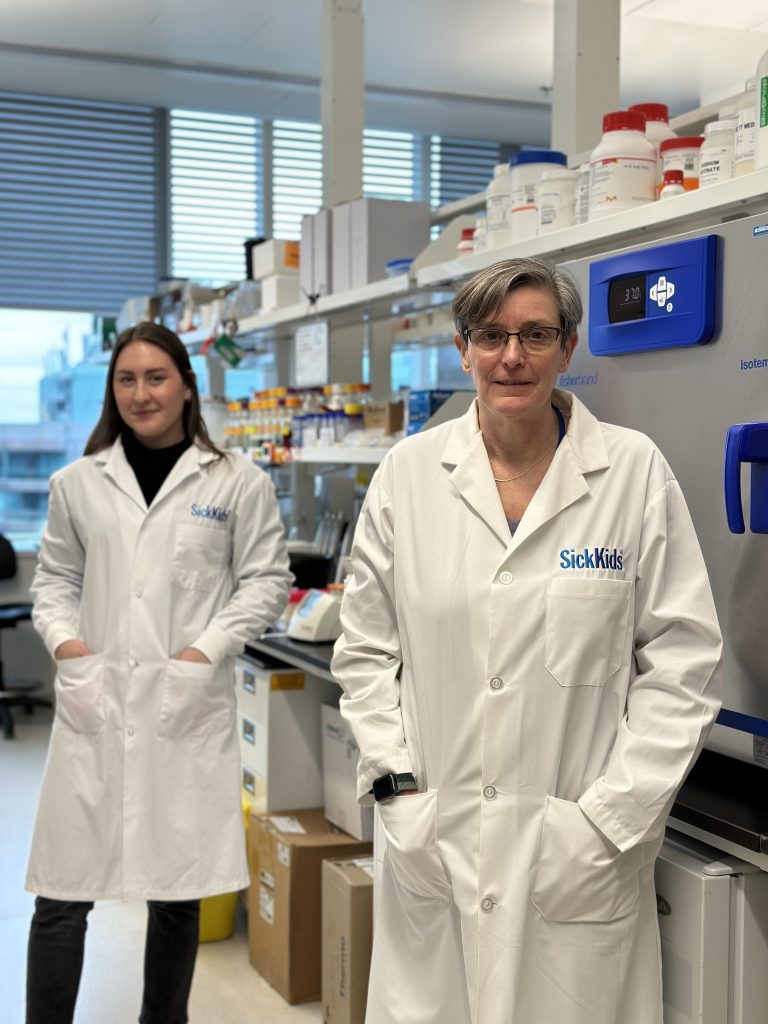Researchers have identified a promising therapeutic target that may lead to improved treatments for lung infections


Even for the healthiest people, lung infections can range in severity, bringing with them nasty symptoms that can disrupt anyone’s daily routines, including chest pain, fever, nausea and changes in mental awareness. However, for patients suffering with cystic fibrosis, contracting a lung infection can be dangerous and, at times, deadly. It’s the reason why a recent discovery made by researchers at the University of Toronto and the Hospital for Sick Children is being heralded as one that poses the potential to change and save lives.
Promising discovery
The discovery, made by Andreea Gheorghita, PhD candidate in the Department of Biochemistry at the University of Toronto and Dr. Lynne Howell, Senior Scientist in the Program of Molecular Medicine at The Hospital for Sick Children and Professor in the Department of Biochemistry at the University of Toronto, involves the identification of a promising therapeutic target that could help treat lung infections in cystic fibrosis patients.
“Individuals with cystic fibrosis have an impairment in their lungs where they have a hard time clearing out the mucus that accumulates within the lungs,” says Gheorghita.
Preventing the impairment
The impairment that Gheorghita refers to is a Pseudomonas—a type of bacteria, or germ, that’s commonly found within the environment in soil and water—of which there are many different variations. Pseudomonas aeruginosa is the variation that most often causes infections in humans, often resulting in infections that propagate within the blood or lungs. In the lungs, the bacteria festers, resulting in a breeding ground for opportunistic infections like pneumonia to spread within individuals suffering from weakened immune systems or other health concerns. For individuals living with cystic fibrosis, recurring infections caused by Pseudomonas accelerates poor health that often requires hospitalization, causing significant lung damage, and worse.
“Because of the impaired ability to clear mucus in the airways, these lung infections can become very persistent and prolonged, which eventually leads to lung tissue damage, loss of lung function, and eventually can cause patient mortality,” explains Gheorghita.
Alleviating damage
To aid in the discovery, the research team leveraged the CMCF beamline at the Canadian Light Source at the University of Saskatchewan in order to properly visualize the interaction between two important proteins that are critical in Pseudomonas’s ability to create biofilm. The biofilm, which is essentially a sticky secretion that allows the bacteria to affix itself to the lungs, erects a barrier of sorts that makes it extremely difficult to treat with antibiotics, further weakening an individual’s immune system and ability to stave off the infection. It’s a discovery, says Howell, that could serve to alleviate the symptoms and damage caused by lung infections in patients with cystic fibrosis.
“If we can try to prevent the biofilm and the bacterial pathogenic infections, we would have an opportunity to prevent the lung damage.”
Influencing future therapeutics
She goes on to explain that the discovery is also important in that it provides another great example of the opportunities present for the advancement of new drug therapies, suggesting that the proteins in biofilm production are great targets for them given the fact that, if attachment of the bacteria can be stopped, the efficacy of antibiotics can be enhanced, and the patients’ immune system can be left to effectively fight the infection.
Gheorghita and Howell are currently focussed on conducting follow-up studies to further bolster their research and are hopeful that their work and findings may lead to the development of new therapeutics and treatment in the future.
 BioLab Business Magazine Together, we reach farther into the Canadian Science community
BioLab Business Magazine Together, we reach farther into the Canadian Science community





